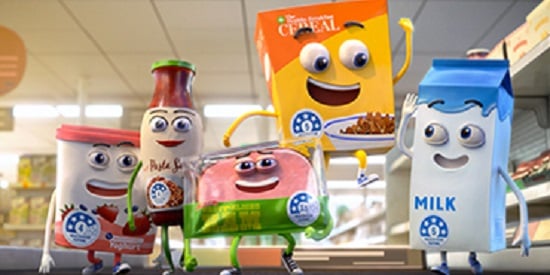Health star label misleads consumers with high ratings for junk food
Media release
A new study into food labelling has shown the current Health Star Rating system may be misleading consumers by giving a 'health halo' to many popular junk foods, including those marketed to children.
Research led by Sarah Dickie from Deakin University's Institute for Physical Activity and Nutrition (IPAN) found three quarters of ultra-processed food and more than half of discretionary food products displayed a Health Star Rating of 2.5 stars or more.
Ms Dickie said the results showed that consumers were not always getting meaningful nutritional advice from Health Star Ratings and this threatened to undermine public trust in the system.
"The Health Star Rating on the front label of food packaging is the most prominent nutrition policy in Australia," Ms Dickie said.
"The simple message that more stars equals healthier food is widely understood by the public but our research shows the stars don't always match dietary guidelines and can be confusing to Australians who use the stars as part of their purchasing decision.
"An effective front-of-pack health label should be discouraging junk foods, not promoting them," Ms Dickie said.
The recently published study looked at all new food products displaying the Health Star Rating label launched between June 2014 and June 2019, evaluating their Health Star Rating against NOVA, a classification system based on processing levels, and the Australian Dietary Guidelines, to determine extent of alignment.
The results showed 73 per cent of ultra-processed food products and 53 per cent of discretionary food products displayed a Health Star Rating equal to or more than 2.5 stars.
"Ratings as high as 3 or 4 stars on junk foods can easily mislead consumers about the healthiness of packaged foods," Ms Dickie said.
Some examples of ultra-processed and discretionary food products with health star ratings that don’t reflect their true nutritional value include:
- Atkins Smooth Chocolate Low Carb Protein Shake 5 stars
- Berri Quelch 99% Fruit Juice Icy Tubes 5 stars
- Streets Blue Ribbon Vanilla Bean Reduced Fat Ice Cream 4.5 stars
- Uncle Tobys Milk & Oats Vanilla Flavour Milk Protein Crisps Bar 4.5 stars
- Arnott's Tiny Teddy Oat & Honey Biscuits 4 stars
- SPC Orange Flavoured Jelly with Diced Peaches 4 stars
- Freedom Foods Crunchola Choc Chip Chewy Bars 4 stars
- Tegel Tempura Battered Chicken Nuggets 3.5 stars
- Kellogg's Nutri-Grain To Go Nutri-Grain Flavoured Protein Squeezer 3.5 stars
- Woolworths Buttermilk Pancake Shaker 3 stars
- Uncle Tobys Roll-Ups Passionfruit Flavoured Rolls 3 stars
- Four 'N Twenty Toppers Mac 'N Cheese 3 Stars
"Some of these products may have reduced salt, sugar and fat to obtain a higher rating but they remain ultra- processed junk foods that are not necessary in a healthy diet," Ms Dickie said.
Ms Dickie said her findings suggested the health star rating system fails to capture the complexity of whole foods and dietary guidelines.
"The algorithm underpinning the Health Star Rating system is based on only a handful of nutrients and doesn’t account for the level of processing or the form of the whole food," Ms Dickie said.
"This discrepancy could lead to mistrust in the system as the symbol may be seen as just another marketing tactic by manufacturers."
Ms Dickie's study is the first to view five years of data on food products since the Health Star Rating system was introduced more than five years ago.
"It is timely because the plan to implement changes based on a formal five-year review from the Ministerial Forum on Food Regulation is expected later this week," Ms Dickie said.
"The international food regulator Codex is also developing guidelines for the use of nutrient profiling in front-of-pack labelling so this is clearly an issue beyond Australia."

